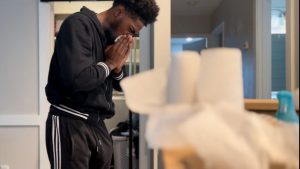Ry’N Good
Staff Writer

It is a long, brick walkway that hundreds have marched on, campaigned on, strolled on and shared memories on.
It is the center for JSU’s famous hotspots known to be thrown on Fridays and the site students can find themselves getting to know one another, whether it is enjoying a game of double-dutch or meeting up to go to the café.
This iconic walkway is known as the Gibbs-Green plaza, however, it’s not the activities that makes it worth recognizing—it’s the tribute behind it.
Prior to the construction of the plaza, during the 1970s it was a thru-traffic route for working-class Mississippians who needed to travel in and out of the city to their residence and to work.
Lynch Street divided the Jackson State College campus. Businesses stood tall and booming on one side while the residence hall that housed hundreds of students stood on the other side.
Mainly known to host all of the various events or being a hangout spot for the student body, in 1970 two lives were claimed in the midst of strife between local law enforcement and black college goers.
Phillip Gibbs, a 21-year-old, political science major attending Jackson State, and James Earl Green, a 17-year-old Jim Hill High School student, were killed May 15, 1970 following what policemen believed to be a gunshot.
Angela Stewart, the Margaret Walker Center archivist, detailed the racial climate during that time, stating the tension derived from protesting against the war, race-related issues and authorities misuse of power.
“There were protests against the Vietnam War and there had been some racial tension between local community members and Jackson State students about the use of Lynch Street, due to the prejudiced things that happened while white drivers would take the route,” explained Stewart.
After hearing about the four Kent State University students who were killed by the National Guard for protesting on campus grounds about the Vietnam War, students at JSC rallied for justice day and night.
As the night approached going into May 15, students heard loud stomping noises outside of their dorm causing them to look out of their room windows. They soon realized it was local policemen marching up Lynch Street and towards Alexander Hall, a girl’s dormitory.
A crowd of students poured outside of Alexander Hall, watching defiantly on, facing the police officers who were standing in the middle of Lynch Street.
According to Lapp Baker, who was a witness and survivor, “By that time one of the students threw a bottle and the bottle burst. All hell broke loose…shooting.”
Policemen fired rounds of bullets, ultimately leaving at least a dozen students injured and two dead, Phillip Gibbs and James Earl Green.
Years after the tragedy, Lynch Street was ordered closed by local civil rights activists, students and local residents.
The bullet holes on the west wing of Alexander Hall that were caused by the firearms were left marked and open for all students and visitors to witness firsthand.
In order to commemorate the life of Gibbs and Green, The Gibbs-Green plaza was built as a reminder of the blood that shed but also a message of power for generations to come. There was also a monument placed outside of the dormitory that summarizes the tragic incident that took place.
This year at the Margaret Walker Center, they are helping to organize the 50thanniversary of Gibbs-Green.
The Center is set to host an official commemoration May 14-15 which will include an alumnus round table, a scholar’s round table, and three exhibits.
Look out for the upcoming exhibits all throughout February as they celebrate black historical moments.




Be First to Comment